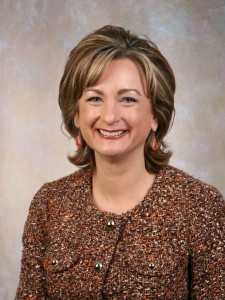
By Rayanna Anderson, MBA
Cash flow analysis answers two of the most frequently asked questions I hear from businesses with money problems: “How could I have made a profit and have no cash?” and “Where did all the money go?” The answers to these two questions are easily answered through an analysis of the company’s cash flow statement, a much needed and less used financial statement of the big three: profit and loss statement, balance sheet, and statement of cash flow.
The statement of cash flow is simply a list of the increases and decreases in account balances on a balance sheet along with the net profit or loss and any owner withdrawals or injections over a period of time. The key is being able to identify the uses of cash and to match those with sources of cash to generate adequate cash flow with or without additional financing.
Cash is the lifeblood of any business, but it is especially important in small businesses where company cash resources may not be as vast as their larger business counterparts. Knowing how cash comes into your business (sources) and how cash goes out of your business (uses) is how successful businesses flourish and why countless businesses fail.
In order to analysis your company’s cash flow, you need to understand how to read and understand your statement of cash flow. There are three categories of cash flow: operating, investing and financing activities. Categorically, the net profit or loss number from the profit and loss statement flow directly to the operating grouping in the statement of cash flow. All other accounts, which appear on the cash flow statement, are from the balance sheet. Often overlooked, these changes in balance sheet account balances are frequently the cause of a reduction in cash total by reducing the cash flow for that period.
I recommend that the most time and attention, to analyze a company’s cash uses, be spent on the operating section of the statement of cash flow. This group of balance sheet accounts include notable accounts of accounts receivable, inventory, accounts payable, and notes payable in the QuickBooks default format. Many times, I see accounts receivable and inventory as big users of cash, in most cases because the company is experiencing growth. As a company’s sales increase, it is expected that accounts receivable and inventory will increase at least proportionally to sales. Unfortunately, most companies with industry standard net profits of 2 to 3 percent are not able to cash flow substantial sales growth without additional sources of cash. Therefore, unplanned sales increases may be difficult to cash flow.
Conversely, increases in accounts payable and notes payable may be sources of cash to the business in these instances. Matching short-term sources of cash with short-term uses of cash is the crucial. A short-term use of cash usually implies the need will be reduced or “paid” in less than a year. When companies continue to grow and expand, cash demands typically exceed that time frame.
Following are several tips for increasing and improving sources of cash on your statement of cash flow.
•For accounts receivable, try restructuring your invoicing or billing procedures to reduce the cycle time of collection and follow it for all accounts.
•Reducing your inventory level by selling off spare parts or items that need discontinuing generates cash and frees up money to purchase new inventory that can generate additional sales based on the number of time you might sell that item annually.
•When reviewing accounts payable balances, always consider using the full terms extended to you from your suppliers and look for suppliers with better terms to support your cash flow.
•Notes payable are short term lending options, typically lines of credit with an annual renewal clause. Make sure you are doing a good job of matching short-term needs with short-term money.
By using your company’s historical statement of cash flow for analysis, you are now ready to create a cash budget for the future. This knowledge will allow you to project times when you may need additional funds or confirm your ability to make major purchase. Either way, you will have a plan for where the money goes!
This article appeared in the August 8th issue of the Springfield News-Leader and can be accessed online here.
Rayanna Anderson, MBA, is director of the Small Business Technology Development Center and the Management Development Institute at Missouri State University’s E-Factory. Anderson writes about issues she sees regularly in her consulting with small businesses in Springfield and the state of Missouri. Email: randerson@missouristate.edu.
